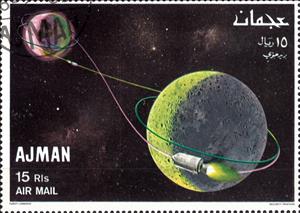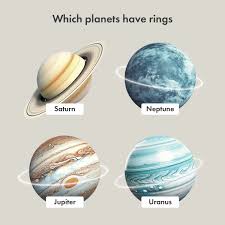Stamp: Trajectory of Apollo 8 (Ajman 1968)
Trajectory of Apollo 8 (Ajman 1968)
25 November (Ajman ) within release Apollo 7 goes into circulation Stamp Trajectory of Apollo 8 face value 15 Qatari riyal
| Stamp Trajectory of Apollo 8 in catalogues | |
|---|---|
| Michel: | Mi: AJ 340A |
| Colnect codes: | Col: AJ 1968.11.25-14b |
Stamp is square format.
Stamp from souvenir sheetAlso in the issue Apollo 7:
- Stamp - Yuri Gagarin (1934-1968), Soviet air force officer and cosmo face value 5;
- Stamp - Edward White (1930-1967), American astronaut, pilot face value 10;
- Stamp - Wostok spaceship face value 15;
- Stamp - Mercury spaceship face value 20;
- Stamp - Apollo flight face value 25;
- Stamp - Apollo-Landing face value 15;
- Stamp - Apollo-Landing face value 15;
- Stamp - Yuri Gagarin (1934-1968), Soviet air force officer and cosmo face value 5;
- Stamp - Edward White (1930-1967), American astronaut, pilot face value 10;
- Stamp - Mercury spaceship face value 20;
- Mini Sheet - Edward White (1930-1967), American astronaut, pilot face value 10*6;
- Mini Sheet - Yuri Gagarin (1934-1968), Soviet air force officer and cosmo face value 6*5;
- Mini Sheet - Apollo-Landing face value 6*15;
- Mini Sheet - Wostok spaceship face value 6*15;
- Stamp - Wostok spaceship face value 15;
- Stamp - Apollo flight face value 25;
- Mini Sheet - Apollo flight face value 6*25;
- Mini Sheet - Mercury spaceship face value 6*20;
- Souvenir Sheet - Apollo-Landing face value 15;
- Souvenir Sheet - Apollo flight face value 25;
- Souvenir Sheet - Edward White (1930-1967), American astronaut, pilot face value 10;
- Souvenir Sheet - Mercury spaceship face value 20;
- Souvenir Sheet - Wostok spaceship face value 15;
- Souvenir Sheet - Yuri Gagarin (1934-1968), Soviet air force officer and cosmo face value 5;
- Full Pane - Apollo flight face value 6*25;
- Full Pane - Edward White (1930-1967), American astronaut, pilot face value 6*10;
- Full Pane - Mercury spaceship face value 6*20;
- Full Pane - Wostok spaceship face value 6*15;
- Full Pane - Yuri Gagarin (1934-1968), Soviet air force officer and cosmo face value 6*5;
- Full Pane - Apollo-Landing face value 6*15;
- Stamp - Trajectory of Apollo 8 face value 15;
- Tete-Beche - Apollo 7 over moon landscape face value 2*10;
Stamp Trajectory of Apollo 8 it reflects the thematic directions:
An astronaut (from the Ancient Greek ἄστρον (astron), meaning 'star', and ναύτης (nautes), meaning 'sailor') is a person trained, equipped, and deployed by a human spaceflight program to serve as a commander or crew member aboard a spacecraft. Although generally reserved for professional space travelers, the term is sometimes applied to anyone who travels into space, including scientists, politicians, journalists, and tourists
Outer space (or simply space) is the expanse that exists beyond Earth's atmosphere and between celestial bodies. It contains ultra-low levels of particle densities, constituting a near-perfect vacuum of predominantly hydrogen and helium plasma, permeated by electromagnetic radiation, cosmic rays, neutrinos, magnetic fields and dust. The baseline temperature of outer space, as set by the background radiation from the Big Bang, is 2.7 kelvins (−270 °C; −455 °F)
A planet is a large, rounded astronomical body that is generally required to be in orbit around a star, stellar remnant, or brown dwarf, and is not one itself. The Solar System has eight planets by the most restrictive definition of the term: the terrestrial planets Mercury, Venus, Earth, and Mars, and the giant planets Jupiter, Saturn, Uranus, and Neptune. The best available theory of planet formation is the nebular hypothesis, which posits that an interstellar cloud collapses out of a nebula to create a young protostar orbited by a protoplanetary disk. Planets grow in this disk by the gradual accumulation of material driven by gravity, a process called accretion.




